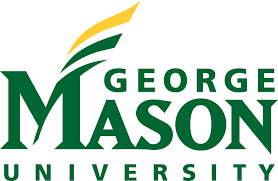George Mason University: A $1.57 million grant funds breakthrough breast cancer prevention and treatment research
A $1.57 million grant from the Department of Army, U.S. Army Medical Research Acquisition Activity, will help support a transformative approach for breast cancer treatment developed by scientists in George Mason University’s Center for Drug Discovery for Rare Diseases. This approach will help individuals at a higher risk for developing tumors and those for whom therapeutics have failed to treat the disease.
This effort, led by Milton Brown, MD, center co-director and professor of practice in Mason’s College of Science, aims to define the structural features and binding characteristics of BRCA1—a tumor suppressing protein to the estrogen receptor in breast cancer stem cells.
BRCA1 regulates critical cell processes needed for normal breast cell function. The National Cancer Institute reports that one in every 500 women in the United States has a BRCA1 or BRCA2 mutation. Women who test positive for a BRCA1 mutation are more likely to develop tumors over time and are at a higher risk for developing breast and ovarian cancer.
Over the next three years, the Mason team, which includes chemist Yali Kong, tumor biologist Kan Wang, MD, and assistant director of scientific operations Farhang Alem, will work to develop a therapeutic drug that helps replace BRCA1 in women who are deficient, and provide a major unmet medical need by offering another therapy option for patients that become resistant to tamoxifen—one of the oldest hormonal therapies.
“A therapeutic like this would help hundreds of thousands of women,” said Brown, who is one of only a handful of physician scientists in the United States that holds a PhD in synthetic chemistry and a medical degree. “Some women who test positive for the mutation select to have their breasts and ovaries removed in order to avoid the risk of getting cancer. Imagine instead, these women would simply be able to take a pill, and it’s like having BRCA1 again.”
The team is also developing a novel approach to treating breast cancer by identifying a BRCA1-mutant stem cell responsible for metastasizing and invading other parts of the body. According to Brown, these breast cancer stem cells, or stem-like cells, are hard to find and, if left behind after removing a tumor, will cause the cancer to reoccur.
Brown’s team will use a protein called DCLK1 to identify and target these cells, which can enhance the drug treating BRCA1-deficient patients to also have the ability to find and kill these specific cancer stem or stem-like cells. Such a treatment would eliminate the need for more invasive procedures like mastectomies and provide an alternative for patients resistant to other drug, chemo, and radiation therapies.
“This is personalized, precision medicine targeting a specific type of cancer cell,” said Brown. “Our strategy can benefit both patient populations—those with cancer and those without.”
Other members of this grant include Mason statistician Naoru Koizumi; breast cancer expert Robert Clarke from the University of Minnesota; cancer pathologist Bashkar Kallakury, MD, from Georgetown University; renown DCLK1 expert Courtney Houchen, MD, from the University of Oklahoma; and Elaine North and Juliann Bryant who are a part of Mason’s sponsored programs.
Submission and award data for the FY21 DoD Breast Cancer Breakthrough Awards show that only 6.1% of 493 applications were recommended for funding.
“I feel so honored to work with the scientists on this multi-institutional research team and to be selected for this meritorious breast cancer breakthrough award,” said Brown. “If we accomplish this, this will be a life-changing breakthrough for women.”

